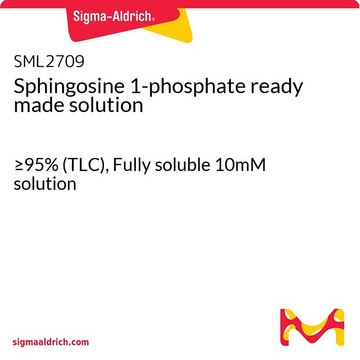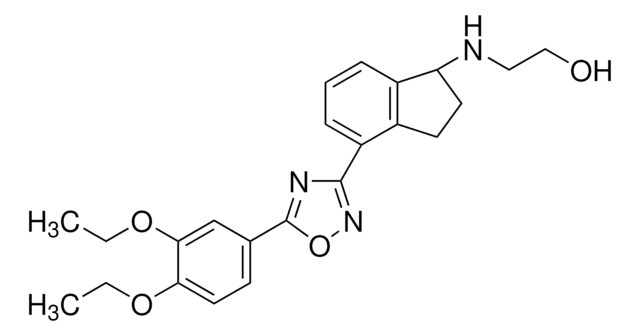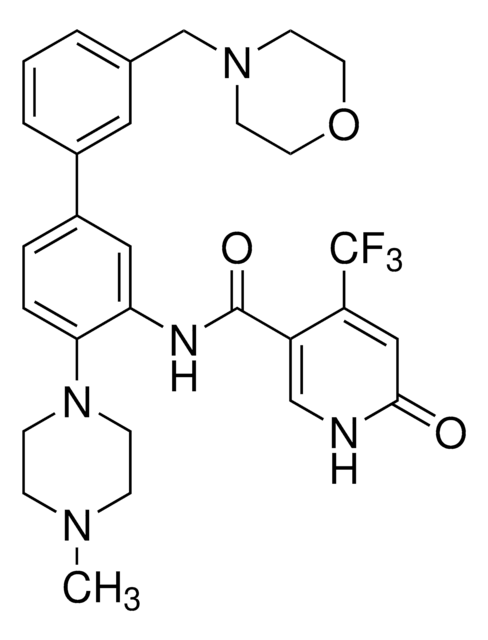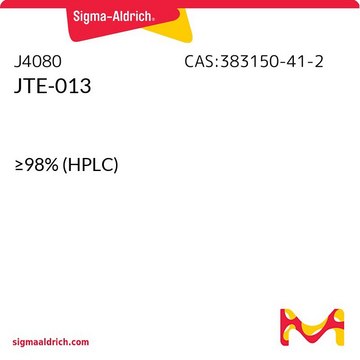おすすめの製品
品質水準
アッセイ
≥98% (HPLC)
形状
solid
保管条件
protect from light
色
white
mp
94.5-95.3 °C
溶解性
DMSO: ≥10 mg/mL
H2O: insoluble
保管温度
2-8°C
SMILES記法
FC(F)(F)c1cccc(c1)-c2noc(n2)-c3cc(-c4ccccc4)c(s3)C(F)(F)F
InChI
1S/C20H10F6N2OS/c21-19(22,23)13-8-4-7-12(9-13)17-27-18(29-28-17)15-10-14(11-5-2-1-3-6-11)16(30-15)20(24,25)26/h1-10H
InChI Key
OYMNPJXKQVTQTR-UHFFFAOYSA-N
遺伝子情報
human ... S1PR1(1901) , S1PR2(9294) , S1PR3(1903) , S1PR4(8698) , S1PR5(53637)
アプリケーション
生物化学的/生理学的作用
特徴および利点
包装
保管分類コード
6.1C - Combustible acute toxic Cat.3 / toxic compounds or compounds which causing chronic effects
WGK
WGK 3
個人用保護具 (PPE)
Eyeshields, Faceshields, Gloves, type P2 (EN 143) respirator cartridges
適用法令
試験研究用途を考慮した関連法令を主に挙げております。化学物質以外については、一部の情報のみ提供しています。 製品を安全かつ合法的に使用することは、使用者の義務です。最新情報により修正される場合があります。WEBの反映には時間を要することがあるため、適宜SDSをご参照ください。
Jan Code
S3944-VAR:
S3944-5MG:
S3944-BULK:
S3944-1MG:
試験成績書(COA)
製品のロット番号・バッチ番号を入力して、試験成績書(COA) を検索できます。ロット番号・バッチ番号は、製品ラベルに「Lot」または「Batch」に続いて記載されています。
この製品を見ている人はこちらもチェック
ライフサイエンス、有機合成、材料科学、クロマトグラフィー、分析など、あらゆる分野の研究に経験のあるメンバーがおります。.
製品に関するお問い合わせはこちら(テクニカルサービス)








